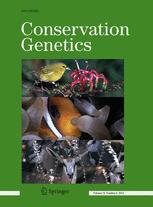客服中心
联系手机:13968834878(吴老师)
发表QQ:![]() 4271308
4271308
编辑QQ:![]() 25786532
25786532
编辑邮箱:zjdxjt5@163.com
联系地址:浙江杭州萧山区金城路185号
本站介绍
“薪火传承 思源致远”,杭州茴香医药科技有限公司栉风沐雨,历经19个春秋,成为一所“综合性、研究型”的一流综合型写作机构,并向一流写作服务机构稳步迈进。“论文撰稿一流精华,论文发表独家优势”,本公司以“宁失万贯,不失诚信,仰不愧于天,俯不怍于地”为宗旨,以“按时是我们诚信基础,录用是我们工作目标”为己任,致力于探索学术领域,攀登学术高峰,满足客户需求,凭借拥有国内多所著名高校人才资源优势,撰稿修改文章已有31700多篇在SCI、权威期刊、核心期刊上发表...更多
conservation genetics
期刊介绍:
Conservation Genetics promotes the conservation of genetic diversity by providing a forum where data and ideas can be presented facilitating the further development of this field of study. Contributions come from researchers in a variety of fields including population genetics molecular ecology and biology evolutionary biology and systematics to name just a few. Conservation issues are multifaceted and incorporate diverse disciplines. This journal will focus on genetic and evolutionary applications to the problems of conservation while reflecting the diversity of concerns that are relevant to conservation biology. Papers are accepted in the following categories: full research papers review papers short communications and short methodological notes (including lab methods computer programs & models and PCR primers). Topics may include but are not restricted to: The taxonomic identification and phylogenetic classification of species and populations and measures of phylogenetic diversity and uniqueness. The identification of hybrid species hybridization in native populations and assessing the history and extent of introgression between species. Population genetic structure of natural and managed populations including the identification of 'evolutionary significant units' and 'management units' for conservation and integration with studies in large-scale ecology (e.g. using GIS and related technologies). The assessment of levels of genetic variation within a species or population including small or endangered populations and the estimation of measures such as effective population size (e.g. through the application of coalescence models to estimate demographic variables). Studies on the impact of inbreeding and outbreeding depression and on the relationship between heterozygosity and measures of fitness. Assessments of mate choice and reproductive strategy (e.g. when the natural pattern of behaviour is thought to have been disrupted). Forensic applications especially for the control of trade in endangered species Practical methods for maximising genetic diversity during captive breeding programs and re-introduction schemes including mathematical models and case studies. Conservation issues related to the introduction of GM plants and animals. The direct interaction between environmental contaminants and the biology and health of an organism. This could include studies on the effect of anthropogenic factors on mutation rates evolutionary adaptation to local changes in the environment (such as industrial melanism) and studies on specific genetic systems that are affected by changes in the environment (such as evidence for the immunosuppresive effects of some contaminants or an impact on the frequency of specific MHC haplotypes).
